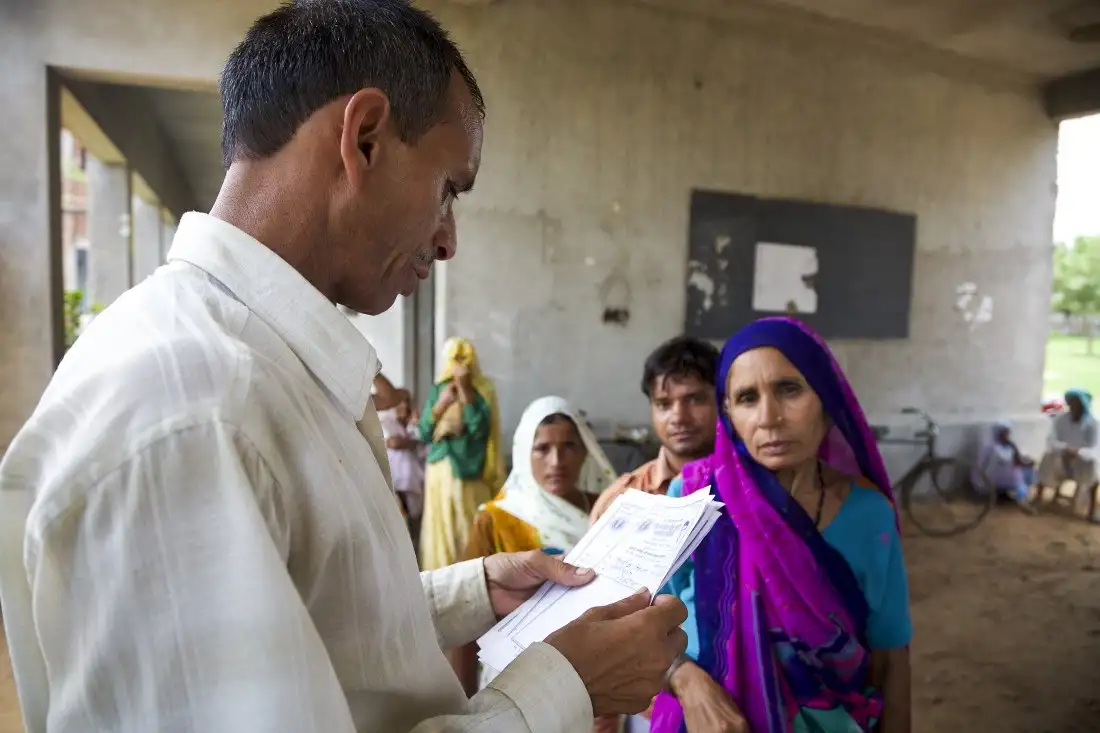
I was into our 3rd week of brainstorming on the project when I realised that I still couldn’t see our target audience clearly.
I had spoken to several stakeholders, fintech leaders, on-field experts and designers and while the problem statement and the need for a solution was clear, I was yet to clearly see who we were building for.
That is when I decided to go back to the Wire article that inspired so much of the thinking and see who we could find.
A few conversations and hunts later, I found Nitin- the whistle-blower who exposed the scam that mis sold several insurance policies to unsuspecting folks, many of whom were farmers. The result- dozens of people losing substantial portions of money and in some cases, losing their life savings as well.
I told Nitin of our project, what we were looking to do and asked him whether I could meet some of the people involved. The answer was a resounding yes!
With the trip planned ahead, I knew that I had to make the most of the opportunity and decided to run a quick design sprint ahead of the field visit. I believed that this would allow us to not only meet our target audience with context, but also quickly help us discern whether our hypothesis could work.
Forces rallied and within a week we were able to create 2 prototypes to test on field over the weekend field visit. Each prototype explained the concept of health insurance. The first one was purely graphics based and the idea was to have it resemble a silent comic strip. The second prototype more closely resembled a pamphlet and had some basic words in Hindi.
Armed with these, I was off to Udaipur.
Over a period of 2 days, I visited villages that were 2 to 5 hours outside of Udaipur city. At one point, I was closer to the Gujarat border than to Udaipur!
I had the opportunity of meeting people from different walks of life- farmers, panchayat officers, small scale entrepreneurs and blue collar workers. I had a chance to speak with them to understand how they contracted at the time of the scam and how they view the world of finance.
Each of them was understandably hassled and upset at having lost money but more importantly, were building up a distrust of the organised financial sector. Their distrust was festering to the extent where they were discouraged from exploring new financial products. Their cynicism ran so deep that they weren’t able to imagine an infrastructure or resources that could teach them and allow for them to provide informed consent at the time of entering into a financial transaction.
As for my prototypes, in spite of each respondent taking the time to sit through each of them with me, they weren’t able to sufficiently understand either prototype without assistance. The design had a long way to go.
But what was even more heart-breaking was that the concept of health insurance did little to excite the respondents or capture their interest.
In all, the expedition was illuminating in more ways than one- not only did it introduce me to a version of the country that I hadn’t had the opportunity of meeting until then, but it gave me a better understanding of the Indian infrastructure that I thought I understood fairly well.
To begin with- I couldn’t ringfence my audience. When it came down to the scam, the victims weren’t categorised by gender, age, occupation or even literacy. The people I met were as multifaceted as the problem itself. Navvabai, the 40 year old widower who could neither read nor write was no differently affected than Ganesh, a 25 year old, high school graduate who worked with the local Panchayat.
Over 4 villages and meetings with over 15 victims of the scam, I could see that their one unifying factor was that they had all been subject to the plagues of information asymmetry at the time of contracting.
While some were illiterate, others were comfortable with reading and writing in Hindi. However, all of them were consistently provided documents in English by the banks.
But even more curious was this- none of them asked for the forms in Hindi and did not demand that the Bank manager explain what the clauses were. The broad terms -of what they thought was the policy- were communicated to them and that was it!
And that really is the core of the issue, isn’t it? And I am confident that this is not localised to just the victims of the scam in any manner.
In my educated privileged circle of peers, I often come across a similar outlook to contracts, where one doesn’t try seeking out what the document contains. Instead, there is an unsaid understanding that we don’t try understanding the ‘legalese’. Yet, we don’t dispute that once signed, we are bound by their terms.
While my field visit reiterated the need for easily understandable contracts and the pressing requirement for an intervention to help those members of society marginalised as a result of their literacy and language barriers, it also awakened me to the need to have more fruitful engagements around me to change the mindset around contracts themselves.
We have miles to go before we sleep.
